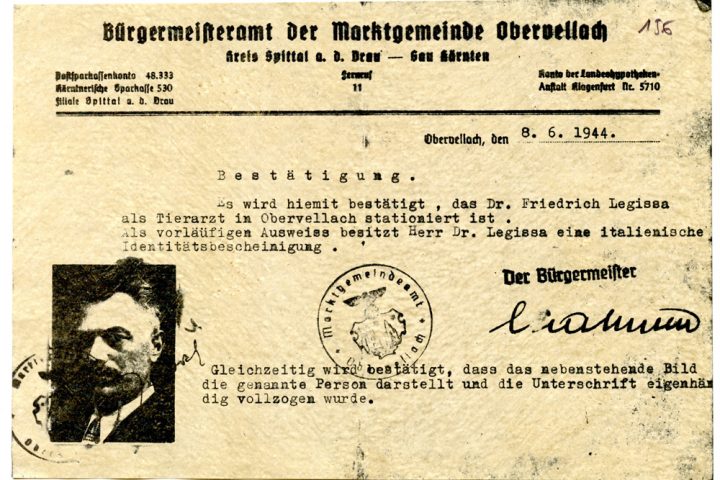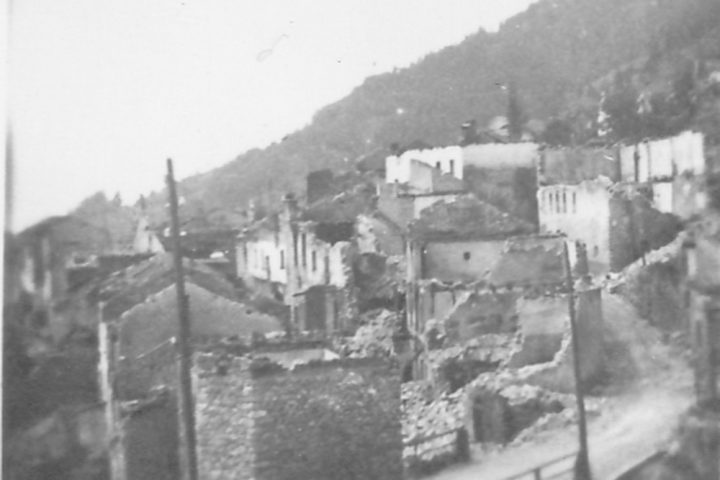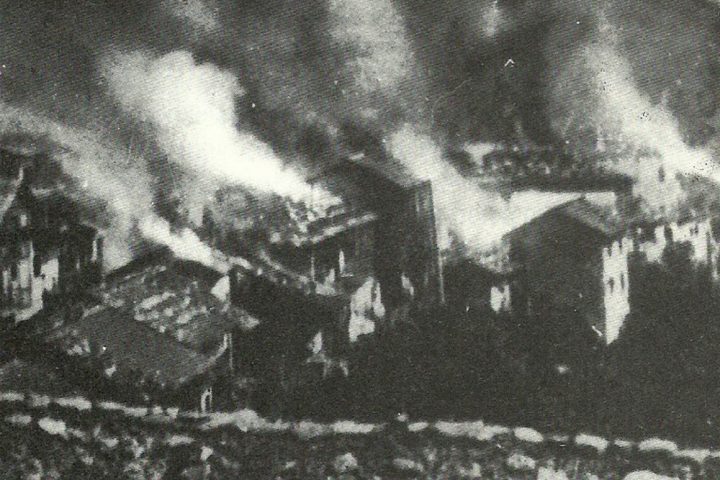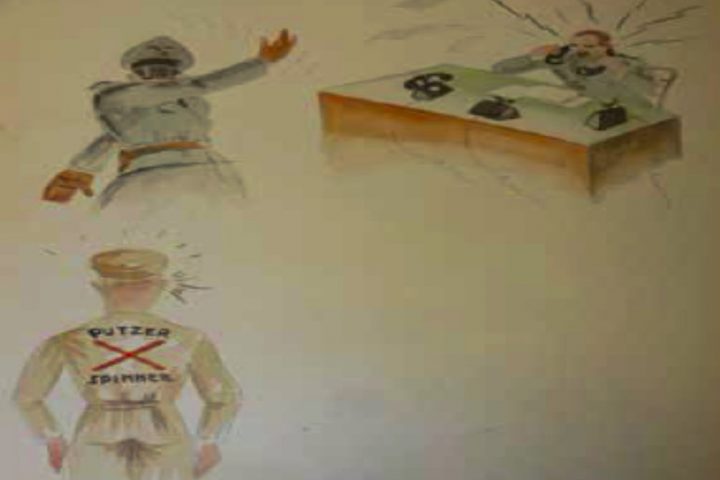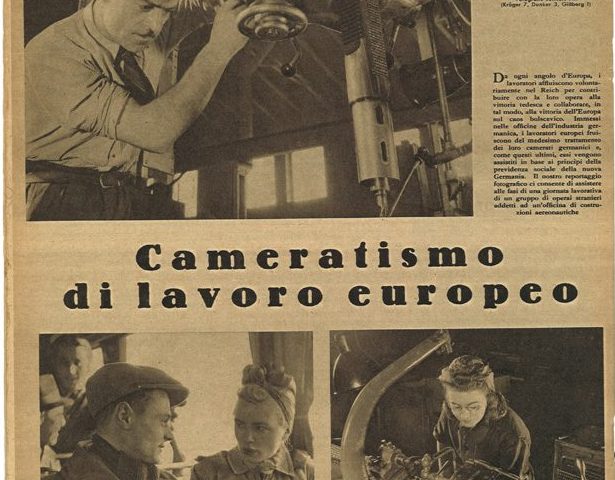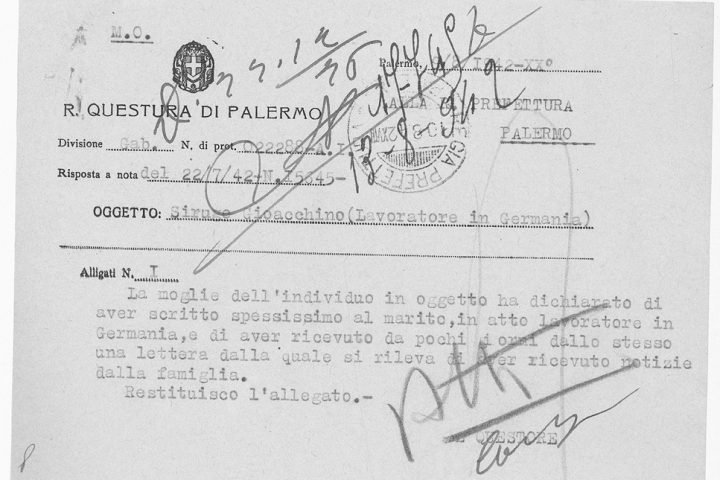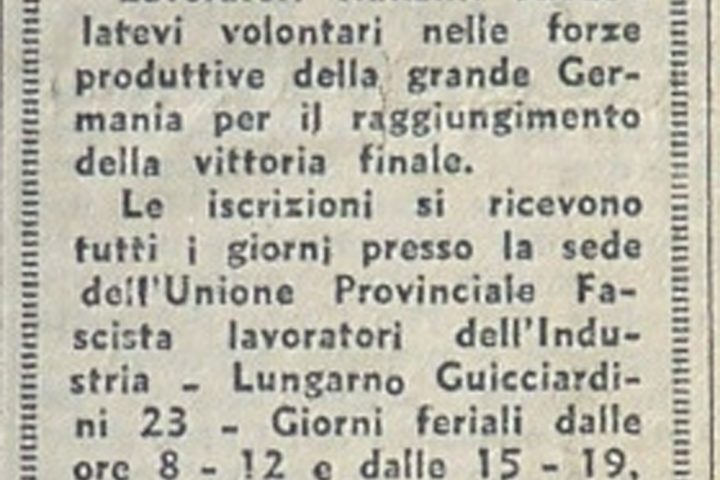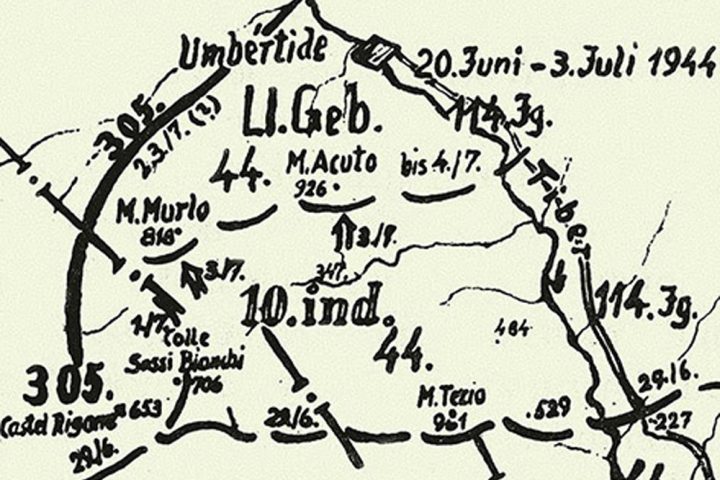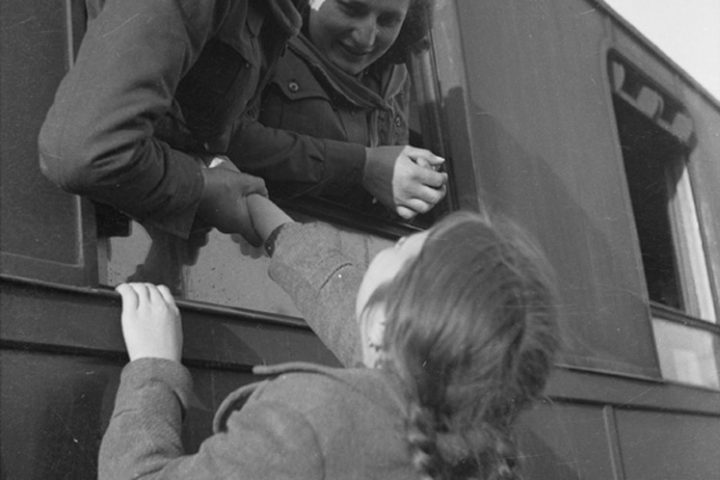Although the Labour Office of the German High Commissioner had increased the activity of hiring manpower to be sent to the Reich, carried out by the Provincial Employment Offices, the workers’ response fell short of expectations. The Supreme Commissioner, while continuing to maintain that recruitment should take place on a voluntary basis, forced people already employed in companies not connected to the war economy to move to the Reich. In addition, on 29 November 1943 Rainer called up certain age groups for compulsory war service, and then for labour service, with call-up papers sent by mail, on 5 March, 30…
Following the Ordinance issued by Hitler on 10 September 1943, which divided Italy into “operations zones and the remaining occupied territory”, the provinces of Trento, Bolzano and Belluno – from which the municipalities of Cortina d’Ampezzo, Livinallongo del Col di Lana and Colle Santa Lucia were transferred to the jurisdiction of Bolzano – became part of the Operationszone Alpenvorland (Prealps Operations Zone, OZAV). The governor of Tyrol, Franz Hofer, was appointed Supreme Commissioner, and was determined to reunify the ancient county of Tyrol divided between Italy and the Reich. In this scenario, already envisaged under the “Options”, which had begun…
There was certainly a substantial presence of workers from Belluno in the Reich in the years 1938-1945, but this reflected a long-standing seasonal migratory tradition; at the end of July 1941, they totalled 3,826. In 1942, the departures of workers belonging to Fascist trade union organisations or recruited by Italian firms operating in Germany began to decrease significantly. In any case, at the end of 1943 there were 1936 industrial workers in the territories of the Reich, mostly trapped there after 25 July. They would be joined the following spring by 500-600 seasonal agricultural workers, for a total of about…
A supreme commissioner, the Gauleiter of Tyrol Franz Hofer, was placed at the head of the OZAV. From the outset, Nazi policy in this area had envisaged the future annexation of South Tyrol to Germany and the “Germanisation” of Alto Adige. In this context, South Tyrol became, especially during 1944, a territory where various people were deported to be used as forced labourers, in particular, in the factories of the satellite camps and in those annexed to the Polizei-und Durchgangslager of Bolzano. The concentration camp would also be an important tool for sending deportees beyond the Brenner Pass, where they…
Starting from 8 September and for an entire week, the German troops withdrew from Sardinia with the mechanised units of the 90th Panzergrenadier Division, as agreed with General Antonio Basso, for a trouble-free evacuation from the island. There were therefore none of the many tragic episodes that bloodied the Italian mainland for over a year and a half, and nor were any people abducted from Sardinia to be sent to the KL (if political deportees), to Auschwitz (if Jews), to Stalag and Oflag (if military), or to the system controlled by the GBA Fritz Sauckel (if forced workers). This does…
Sicily, like much of the South, with the sole exception of the province of Bari, did not witness “voluntary” emigration to the Reich until 1940.In the first recruitments of farm workers, in fact, the Germans sought skilled labour for the cultivation of beets and potatoes.Only later, from 1941 onwards, did pressure from the south for the employment of their own labourers finally lead to quotas from the South also for farming work. Also from 1940 onwards, the German requests for construction, mining, and shipbuilding labour would similarly target the South. Sicily above all witnessed departures of construction workers and miners,…
The Turin area, like the whole industrial triangle, had enormous importance in the recruitment of manpower for Germany, both before and after 8 September 1943. After the armistice and occupation, Piedmont was the fourth most important region of Italy in terms of numbers of workers sent to the Reich, with over 7,000 from the province of Turin alone. Apart from those who went there “voluntarily”, the methods of coercive conscription that led to the greatest results were the “prison actions”, i.e. the emptying of the prisons in the territories where the Nazis and Italian Social Republic government were based, incurred…
Also in Tuscany, operations aimed at recruiting manpower began shortly after the arrival of the occupiers. The German and Italian authorities moved on several fronts: first of all, an attempt was made to recruit voluntary workers through an intense propaganda campaign, which envisaged, on the one hand, the mobilisation of trade union organisations and, on the other, the use of posters, flyers, and advertisements in newspapers, as well as recreational events aimed at bringing workers and the unemployed closer together (see the section Local propaganda). Already in the autumn of 1943, however, there are reports of some roundups of civilians…
The German occupiers, in sometimes tense collaboration with the Italian Social Republic’s provincial head Armando Rocchi, engaged in massacres, attacks, and shootings, as well as roundups in the areas where partisan brigades operated, in order to provide forced labour for Germany. The individual cases of forced labour shipments would mainly concern rural territories in which at the same time there was also conscription for work, and would affect both the mountain and urban areas of the region. The capillary identification of those refusing to comply with conscription for work in the Reich, by the occupying forces, was aimed not only…
Veneto, where German occupation began on 10 September 1943, was immediately considered a valuable reservoir of manpower to be employed in the territories of the Reich, and later, in the face of a possible Allied advance, in the construction of defensive works locally. Despite the repeated job advertisements, and working conditions which at least on paper seemed attractive, voluntary applications to move to Germany were extremely rare in all the provinces. Therefore, having carried out the census, updated several times, of the potential working population, on the basis of the lists prepared by the municipalities and sent to the Employment…
